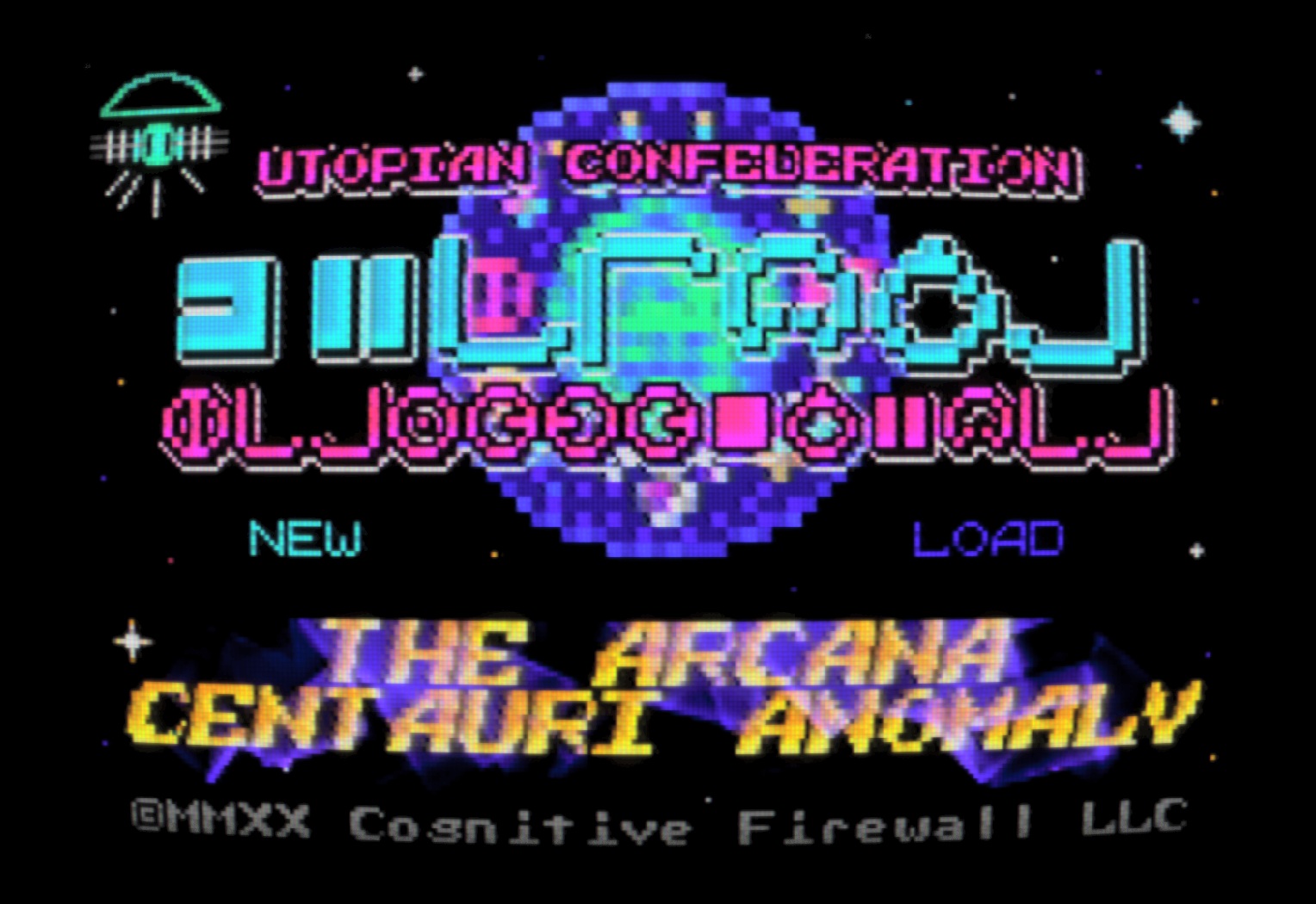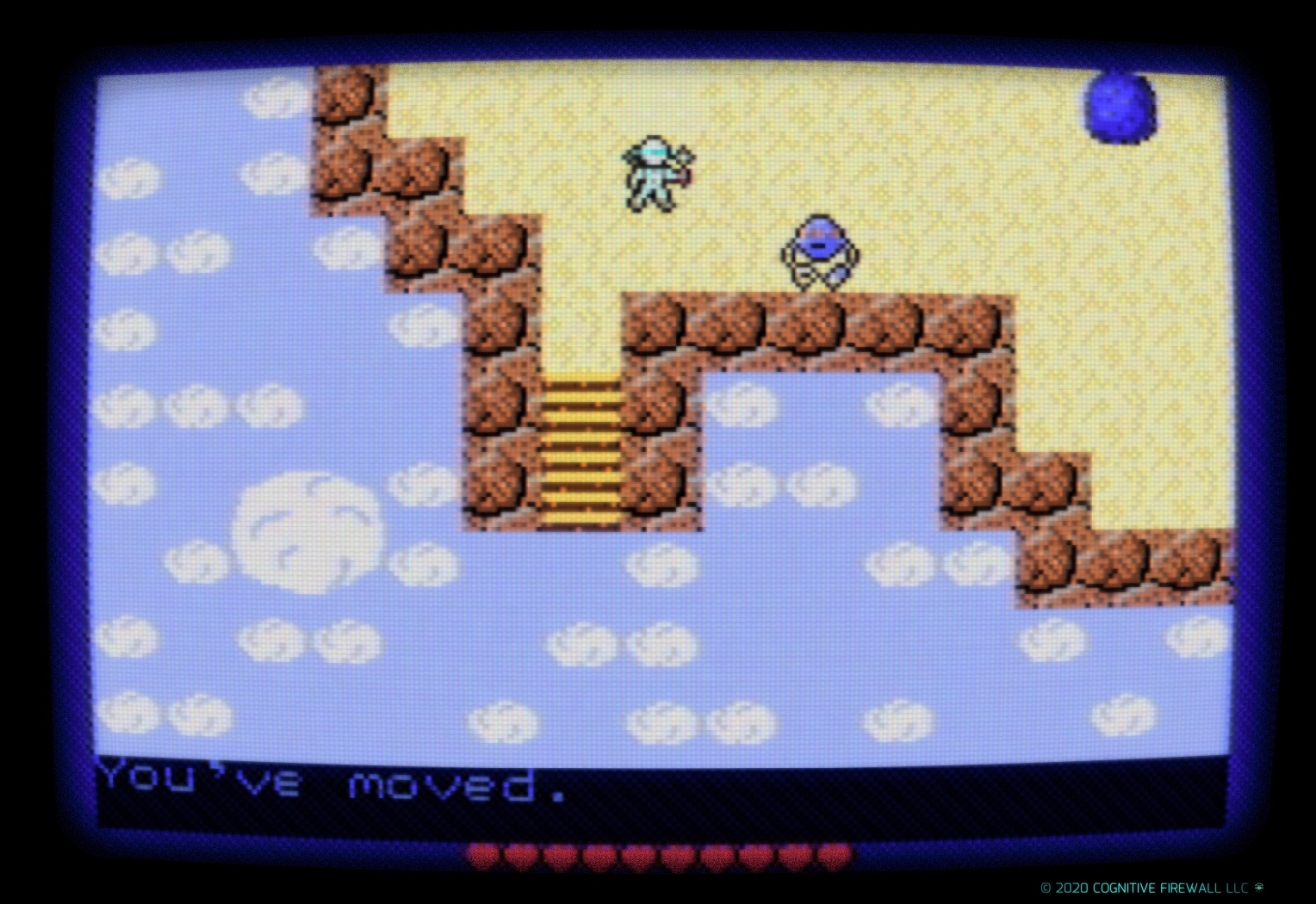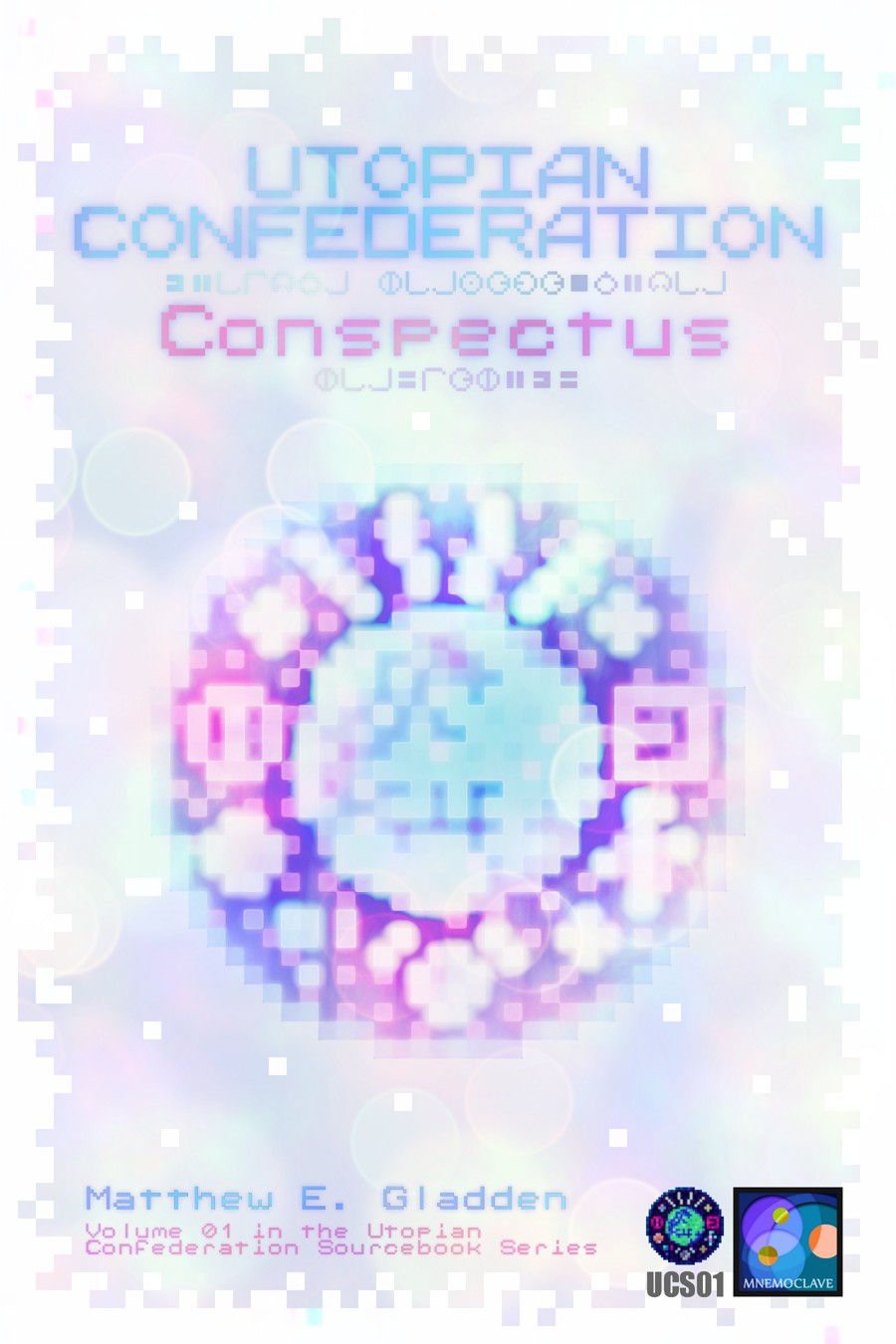Cognitive Firewall LLC is an independent computer game studio that produces lovingly crafted 8-bit-style retro games with a distinctly philosophical bent.
For us, the choice of an 8-bit aesthetic – with its simplistic and even “rudimentary” graphics, music, storylines, and gameplay – is about much more than sheer nostalgia or the desire to fashion games with a quirky, endearing charm. Rather, it’s born of a belief in the incredible power that’s possessed by games that leave as many elements as possible to be generated and shaped by players’ own imaginations. Our passion is giving new generations of gamers the thrill of discovering that a monochrome text-based adventure or a 2D overhead RPG with 176×184px graphics can be just as immersive as a game with lush 3D graphics presented on a 4K display – and maybe, just maybe, even more memorable, engrossing, and engaging.
While amazing experiences can be delivered by games in every genre, style, and format, our favorite type of game is one that serves as a skeletal structure designed to spark players’ creativity, fuel their inner artist and storytelling genius, and awaken their sense of wonder – not to overwhelm their senses. Our dream is to lead players on a journey through the immersive gameworlds that they fashion within the richness of their own minds – with just a bit of well-placed guidance from a game.
Utopian Confederation
Cognitive Firewall draws on the talents of award-winning game designers and writers with decades of experience in the field. The studio’s current multiyear project is development of the Utopian Confederation series of games that build on the Utopian vision of Thomas More. You can learn more about the game’s setting in the book Utopian Confederation: Conspectus.
Phenomenology of the Gameworld
Our studio’s approach to game design is explored in depth in the book Phenomenology of the Gameworld: A Philosophical Toolbox for Video Game Developers, which considers the ways in which the human mind constitutes the most powerful game engine and investigates how it’s possible for even “simple” 2D games with 8-bit-style visuals to immerse players in worlds that are beautiful, terrifying, mysterious, or moving, that are brutally realistic or delightfully whimsical.
Drawing on insights from the field of phenomenological aesthetics, the book explores the strange ways in which a gameworld’s contents can “shrink” or “grow” in players’ minds, depending on whether the players are mentally positioned within a game’s social space, cultural space, built space, or tactical space. The book also investigates the manner in which players’ minds spontaneously “concretize” the countless gaps that exist in a game – and how this dynamic explains why so many players enjoy 8-bit-style games with retro pixel art – and even old-school text-based adventures or ASCII games with only the sparsest and most impressionistic of “graphics.”






